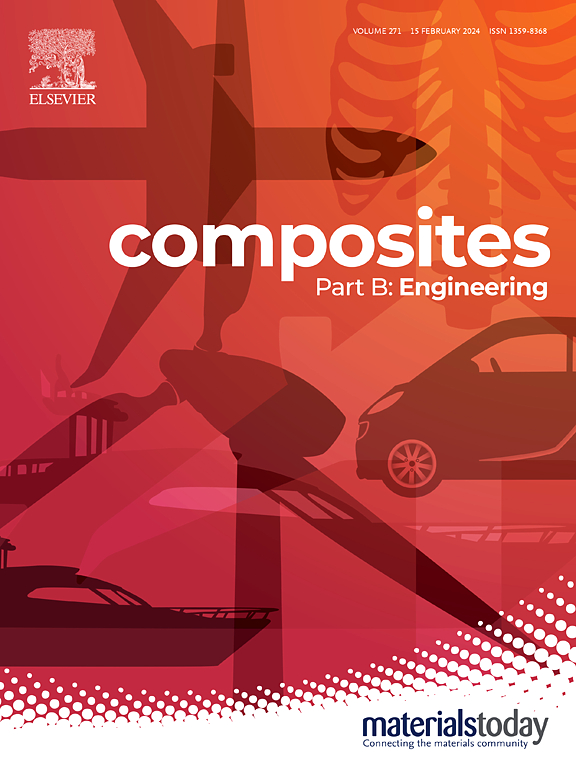综述了仿生材料的仿生结构特征及性能机理
IF 12.7
1区 材料科学
Q1 ENGINEERING, MULTIDISCIPLINARY
引用次数: 0
摘要
具有高能量吸收性能的轻量化结构在许多关键领域具有重要意义。仿生结构设计已经证明了一种有效的策略,通过结合自然生物的独特结构特征来提高材料和结构的性能。本文对结构设计的一些重要进展进行了深入和全面的综述,以获得具有改进能量吸收性能的新型仿生结构。根据仿生结构的共同特点及其仿生来源,对结构设计进行了分类和总结,并从结构形态、制造工艺、分析方法、吸能性能以及性能指标的对比分析等方面进行了详细介绍。此外,还探讨了仿生轻量化结构在不同工程领域的应用研究。仿生结构特性的引入确实显著提高了结构的吸能性能和耐撞性,同时保持了相似的总重量。这一现象促使许多研究者投身于这一研究,并不断取得新的研究成果。同时,自然界中种类繁多的生物为仿生结构设计提供了取之不尽的资源。然而,这些研究大多停留在实验室,由于制造工艺、在特定环境中的适用性、创新材料和生产的成本、产品成熟度以及大规模生产的可行性和成本等各种限制,难以实现实际应用。总之,仿生轻量化结构具有巨大的潜力和广阔的应用前景,但在实际应用中仍存在诸多挑战。本文章由计算机程序翻译,如有差异,请以英文原文为准。
A review of recent research on bionic structural characteristics and performance mechanisms of biomimetic materials
Lightweight structures with high energy absorption (EA) performance are of great significance in many crucial fields. Biomimetic structural design has demonstrated an effective strategy to improve the performance of both materials and structures by incorporating the unique structural characteristics of natural organisms. This review paper provides an in-depth and comprehensive overview of some important advances in structural design to obtain novel bio-inspired structures with improved energy absorption properties. The structural designs are categorized and summarized based on the common characteristics of biomimetic structures and their bio-inspired sources, and detailedly introduced in terms of the structural configurations, manufacturing processes, analysis methods and energy absorption properties as well as the comparative analysis of performance indicators. Moreover, the application investigations of biomimetic lightweight structures across diverse engineering domains are explored. The introduction of biomimetic structural characteristics indeed significantly improved the structural energy absorption performance and crashworthiness while maintaining the similar overall weight. This phenomenon drives many researchers to devote themselves to this investigations, and continuously achieve new research results. Meanwhile, the endless variety of biological species in nature provides inexhaustible sources for biomimetic structural designs. However, most of these investigations stop at laboratory and are difficult to achieve actual applications due to their various limitations such as manufacturing processes, serviceability in specific environments, the cost of innovative materials and production, product maturity, and the feasibility and cost of mass production. In short, the biomimetic lightweight structures present great potential and broad application prospects, but there are still many challenges to the practical applications.
求助全文
通过发布文献求助,成功后即可免费获取论文全文。
去求助
来源期刊

Composites Part B: Engineering
工程技术-材料科学:复合
CiteScore
24.40
自引率
11.50%
发文量
784
审稿时长
21 days
期刊介绍:
Composites Part B: Engineering is a journal that publishes impactful research of high quality on composite materials. This research is supported by fundamental mechanics and materials science and engineering approaches. The targeted research can cover a wide range of length scales, ranging from nano to micro and meso, and even to the full product and structure level. The journal specifically focuses on engineering applications that involve high performance composites. These applications can range from low volume and high cost to high volume and low cost composite development.
The main goal of the journal is to provide a platform for the prompt publication of original and high quality research. The emphasis is on design, development, modeling, validation, and manufacturing of engineering details and concepts. The journal welcomes both basic research papers and proposals for review articles. Authors are encouraged to address challenges across various application areas. These areas include, but are not limited to, aerospace, automotive, and other surface transportation. The journal also covers energy-related applications, with a focus on renewable energy. Other application areas include infrastructure, off-shore and maritime projects, health care technology, and recreational products.
 求助内容:
求助内容: 应助结果提醒方式:
应助结果提醒方式:


